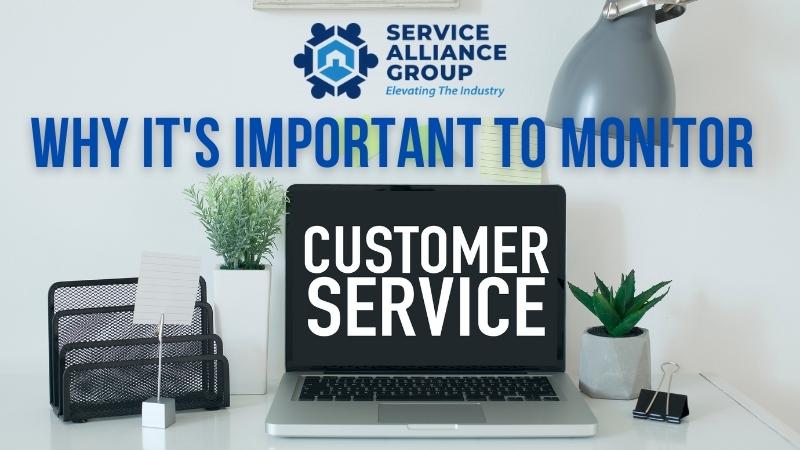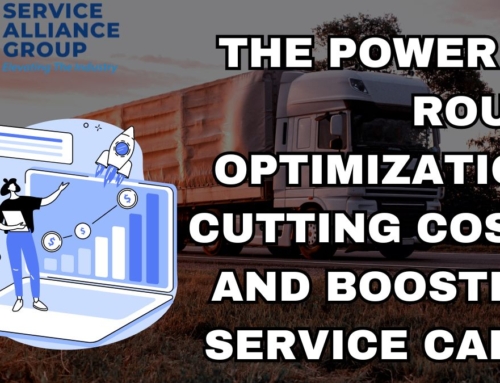Customer service is vital to every company. What would happen if someone called your customer service line and didn’t get satisfaction? Many times customers complain about poor services and bad treatment from businesses.
We’ve heard horror stories where customers have had negative experiences with customer service representatives (CSRs). Most of us would rather pay higher prices because CSR didn’t give them what they were promised. Unfortunately, this leads to lower sales volumes, fewer repeat purchases, and lost revenue. That’s why it’s important to monitor customer service.
Monitoring customer service involves identifying key metrics and measuring their trends over time to determine whether things are improving or deteriorating. The goal is to identify areas where improvements can be made before customers start complaining. The result is better customer experiences overall.
Here Are the Reasons Why It’s Vital to Monitor Customer Service
A positive customer experience ensures customer retention, repeat business, and word-of-mouth marketing campaigns. This is why monitoring customer service is crucial.
For Better Reputation
The best companies understand that the quality of their product or service doesn’t matter unless delivered well. Customers are the lifeblood of every organization. They’re the ones who buy products and services, use apps, and tell their friends about great experiences. And happy customers help grow a brand. So how do you make sure your customers come away feeling satisfied? Start by treating them like royalty.
Companies seeking to grow their brand focus on providing exceptional personal care and attention to their customers. After a positive customer experience, you’ll see increased loyalty and referrals. With 69% of consumers willing to recommend a brand based on a great customer experience, you’re missing out on a huge possibility if you aren’t delivering exceptional customer service.
Makes You Make Better Business Decisions
Customer satisfaction surveys can give you insights into customer feedback on their preferences and needs. This information reveals what products and services your customers want, how satisfied they are with those offerings, and where they’d like to find additional options. You can use this data to improve existing products and services, identify areas of opportunity, and plan future product releases.
Customer satisfaction surveys can help you understand what works best for your customers. They can also provide insights into how your customers communicate with you. This information can give insight into what communications channels work best for your brand.
Finally, you can use customer satisfaction research to understand your customers better. Customer surveys can uncover things about your customers that you never knew before—like whether they’re happy with your customer support team or would rather call or text someone. Armed with this knowledge, you can tailor your customer interactions accordingly.
You can also use customer satisfaction surveys to measure customer loyalty. For example, do certain products sell well because they are popular among your customers? How do different types of customers differ in terms of product preferences? These questions can help you improve your marketing strategy.
Makes You Surpass Your Competitors
Customers should be satisfied with your company and feel comfortable enough to reveal to others their excellent customer service experiences with your business. In addition, your customers should know that you care about them and their opinions. You may think that people judge businesses based on price alone, but they judge them based on much more than cost. They judge you according to your capacity to provide excellent service, responsiveness to complaints, and willingness to share useful information.
When you provide stellar customer service, you set yourself apart from the rest by creating an environment where customers are satisfied and content.
Stops Customers from Churning Your Services
Research by thinkJar found that 66 percent of consumers say bad experiences cause them to switch products or companies. In comparison, 67 percent of those surveyed said they’d consider switching providers again within six months of having a poor experience. In addition, nearly half of respondents said they wouldn’t recommend a brand to someone else due to a bad experience. And according to research from Forrester, 67 percent of dissatisfied customers will eventually leave a company.
The good news is you have many means to improve retention, even though churn is often viewed as negative. Customer service is key in reducing churn because it helps prevent dissatisfied customers from switching to competitors.
Since negative experience often results in lower consumer/customer satisfaction levels, these tools can be used to determine if your customers are churning out. You can use tools such as Net Promoter Score (NPS), Customer Satisfaction Index (CSI), Net Promoter Profitability Index (NPPI), Customer Experience Management (CEM), etc., to measure the level of customer satisfaction.
If you want to prevent churn, make sure that you provide excellent customer service. Your customer service staff needs to know your loyal customers well and understand why they chose your brand in the first place. They must offer solutions to problems and ensure that customers receive quick response times to questions and concerns.
Improves Recommendations via Word-of-Mouth
Customer satisfaction is highly regarded when it comes to businesses. In fact, according to research conducted by global management consulting firm Accenture, 55 percent — nearly half — of consumers show their loyalty by sharing their experiences with friends and family. And while we’re talking about loyalty, let’s talk about word-of-mouth.
According to data from WordStream, 83 percent of consumers trust recommendations from their networks more than any other form of marketing. There’s nothing more powerful than word-of-mouth referrals, especially when generated through a positive experience, where you feel valued and appreciated.
Helps You Identify Where the Business Needs More Development
Surveys don’t just provide insight into how well your current products are doing; they can also tell you what features or improvements you should make next. For example, if you’re running low on stock of a particular item, you could send out customer survey responses, asking customers what they’d like to see added to the product. If most people say “more,” you’ll likely add those items to the next version of your product.
If you notice that some customers aren’t happy with your product, you can use surveys to find out why. For example, maybe there’s a bug in the software that causes problems for some people. Or maybe the quality control team didn’t test enough units during production. Either way, knowing the problem can help you fix it.
The More the Customers Stay, the More They Are Satisfied
Customer retention rate is a vital metric in marketing. It’s what keeps customers coming back. If you don’t retain customers, you lose money. In fact, according to Forrester Research, companies that lose 50 percent or more of their customers typically see their revenues decline by 20 percent over three years.
Retaining customers isn’t easy. Customers are bombarded with options. They’re constantly comparing products and services. And they want to do business with someone who cares about their needs.
The best way to keep customers is to ensure exceptional customer service. This includes all, from the initial contact through the resolution process. But, customer interactions go beyond simply providing great customer support. You must build a culture where everyone feels valued and appreciated. Your employees must feel like they matter.
Improves the Customer Lifetime Value Quotient
Customer Lifetime Value (CLTV), or how much a customer contributes to a company’s bottom line, is a customer service metric used to determine whether a customer is worth keeping around. This number is calculated by multiplying the average purchase frequency of each individual customer by the average total spent by each customer during a given period.
The concept isn’t new—it’s been around since 2004. But what makes CLTV different today is the fact that companies can use data to measure exactly how well they’re doing about customer retention. This includes things like churn rates, average purchase amounts, and even whether or not customers return to make additional purchases.
The goal of improving these customer service metrics is to increase the average purchase frequency of every single customer while simultaneously reducing the average total spent per transaction. A well-run customer service department can help accomplish both goals.
Brings Employee Happiness
Employee engagement is one of those things you hear about all the time, but it’s hard to quantify. But Gallup discovered that employees who feel appreciated, valued, and respected tend to be happier. And happy employees perform better. They’re more productive, creative, and less likely to burn out.
Gallup has concluded that people engaged at work are happier, making them better communicators and motivating others to help them perform better. Their findings also show that companies with employees who are engaged experience fewer staff turnouts. In addition, Deloitte’s research suggests that employees who get involved with their work and the company they’re working for feel better about themselves, making them less likely to quit. They also find that these “engaged” employees give valuable customer feedback and suggestions on ways to improve their work environments and overall performance.
But what does this mean for startup founders? First, to build a great product, you’ll need to ensure your employees are happy too. To retain your best talent, you’ve got to provide them with opportunities to grow professionally and personally.
Creates More Customer Advocates
Customer marketing involves turning existing customers — those you already know and trust — into advocates for your product. This type of marketing is one of the most effective ways to increase sales and reduce costs. Savvy companies are finding creative ways to turn their best customers into promoters of their brands.
This marketing strategy requires engaging with current clients, building relationships, and providing exceptional service.
Customer advocacy is one of the most effective ways to grow sales and save money simultaneously. But it requires a lot of work. And it can take months to build up a solid base of advocates.
A recent study found that companies with high levels of customer advocacy had lower marketing costs than those without it. This makes sense because you’re spending less money to reach more potential buyers.
The research also showed that customer advocacy leads to increased revenue, too. When customers coming from bad customer experiences are treated well, they become advocates — and word spreads quickly about how good your products and services are. They tell others what they love about your company and what they don’t like. These glowing endorsements help you build credibility and visibility among prospects. And when prospects see that your customers rave about your product or service, they’re likely to buy from you, too.
Better Customer Sentiment
The term “culture” conjures up images of corporate America — think Apple, Starbucks, and Whole Foods. But companies are now focusing more on how they treat satisfied customers, employees, and competitors. In fact, according to Accenture, “customer experience” is one of the most important factors influencing consumer behavior today. Develop a strong culture that starts with the bottom-up approach.
When you create a culture of providing good experiences, your employees follow suit, says Gartner Research Director Greg Sterling. For example, they ensure everyone gets paid on time or provide free food during lunchtime. This helps foster trust among colleagues and makes them feel valued. As a result, they’re more likely to go out of their way to help each other succeed.
Promotes Better Brand Awareness and Customer Experiences
Brands are built on trust, loyalty, and advocacy. In fact, according to a study by marketing firm Vanson Bourne, people choose products based on how much they like the brand over price alone. So when someone recommends something, whether a product or a person, it becomes part of our collective consciousness. It’s important to remember that even though we’re talking about brands here, the same principles apply to individuals. So, for example, when someone posts a glowing review of your product or service, it builds credibility and makes you look good.
What does this mean if you have a business looking to grow its brand awareness? First, make sure you’ve got stellar customer service agents. Second, don’t underestimate the power of referrals. Third, take advantage of analytics tools that measure everything from online reviews to sentiment analysis to determine where your brand stands among consumers. Finally, think about ways to provide positive experiences for your current customers. You’ll see your brand awareness soar.
Unifies the Processes, Goals, and Vision
When you think about it, excellent customer experience isn’t just a function within a company; it’s the foundation of how everything else works. If your employees aren’t aligned around your core values, no matter what they’re doing, your organization won’t work well. And if your customer service team doesn’t know where it stands, it might even start losing unhappy customers.
When everyone at a company shares the same business objectives, the whole organization can become streamlined. In addition, this alignment allows customer service team members to work together toward the same outcome instead of being pulled in different directions by competing priorities.
For Scaling up and Thriving
Business owners take a huge risk every day when starting a company. This is why building a strong foundation for success, including great customer service experiences, makes sense. A study conducted by Fundera found that 80% of founders believed that providing an excellent customer service experience would help them maintain momentum and avoid losing money. According to a recent study, approximately 20 percent of small companies fail within their first year. Further research shows that about 50 percent of these failed firms go out of business after five years.
The reasons for failure are many, ranging from lack of funding to misunderstandings about market value. However, one common thread among failed companies is dissatisfaction with customer service. Satisfied customers resolve common issues, mitigating the risks associated with building a successful business with good customer service.
Tips When Monitoring Customer Service
Customers are your biggest assets. If you don’t treat your customers with respect, they won’t be loyal to you. As a business owner or manager, you have the power to make or break a customer’s experience with your company. That means being observant of everything that goes on around you.
Do Involve Everybody
There should be a shift in mindset. Instead of thinking of customer satisfaction as a separate entity, the customer service team members should consider it as part of the process of creating a better product. As such, it became a core component of the organization.
Do Get the Right Information
Companies can track poor customer experiences across multiple channels and devices—from mobile apps to social media sites to call centers. They can use predictive analytics to identify future trends and opportunities based on historical behavior. But how do you know whether those insights translate into real improvements?
There are three patterns of customer information, each with its unique pace and level of data capture. A persistent pattern captures information about interactions over long periods of time; periodic captures information about interactions over shorter periods, and pulsed captures information about interactions at specific moments in time.
The goal of tracking customer experience interactions is to understand what happens during the entire lifecycle of the relationship—not just the final transaction. This includes everything, from the onset of initial contact to the end of the relationship.
Do Act on Experience
By leveraging the insights obtained during the audit, HiTouch enhanced its ability to deliver superior customer experiences. For example, the company now knows that some customers are highly engaged with its products and services; others are not. This knowledge enables the company to focus resources on providing exceptional experiences to the former group while delivering less-than-optimal ones to the latter.
To End
Delivering a superior customer experience requires a strong understanding of what makes up the customer journey, how it unfolds over time, and how to leverage technology to improve the overall customer experience to achieve business success. How do you monitor customer service? Do you need help in this aspect? Connect with us so our professional team can help you.






